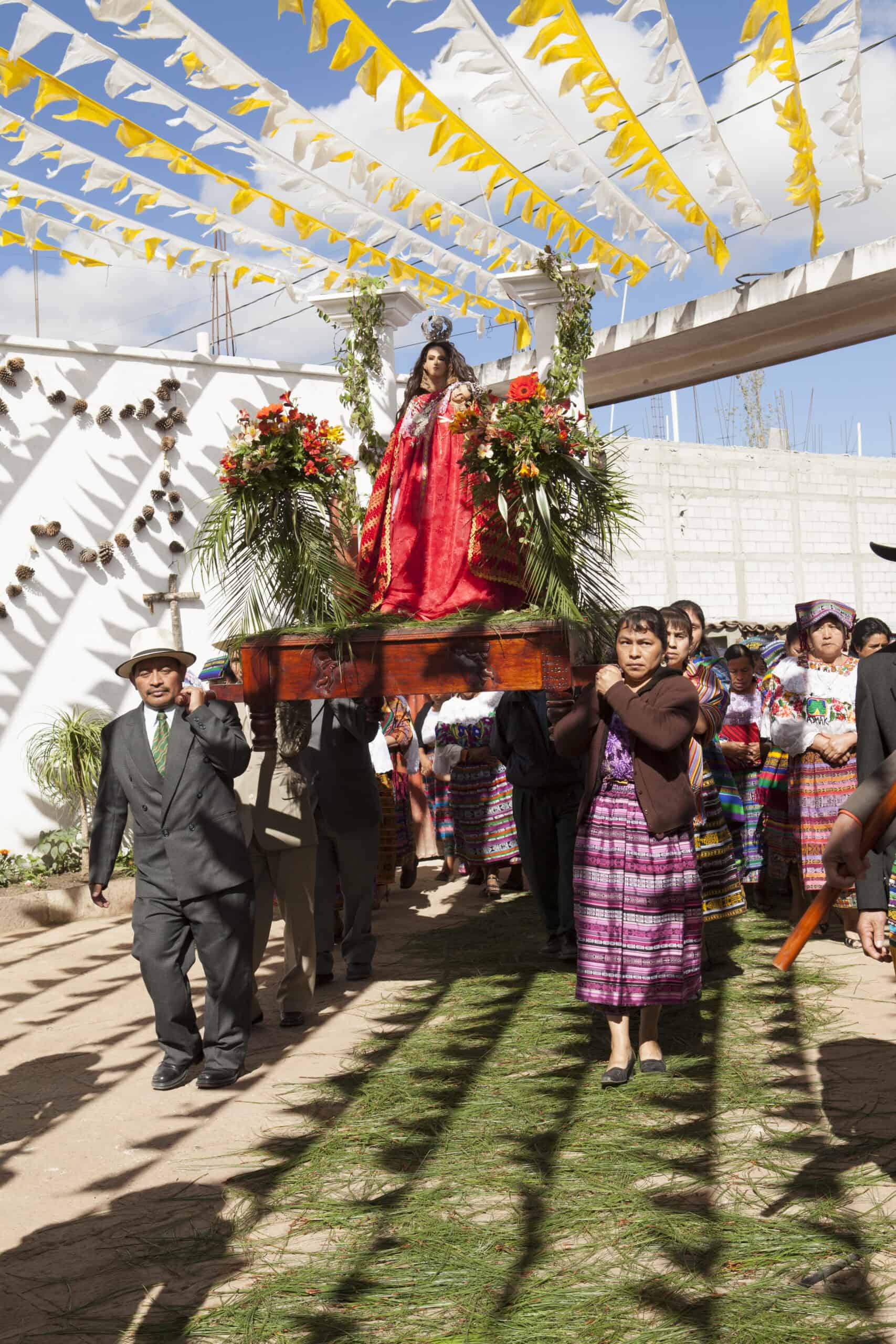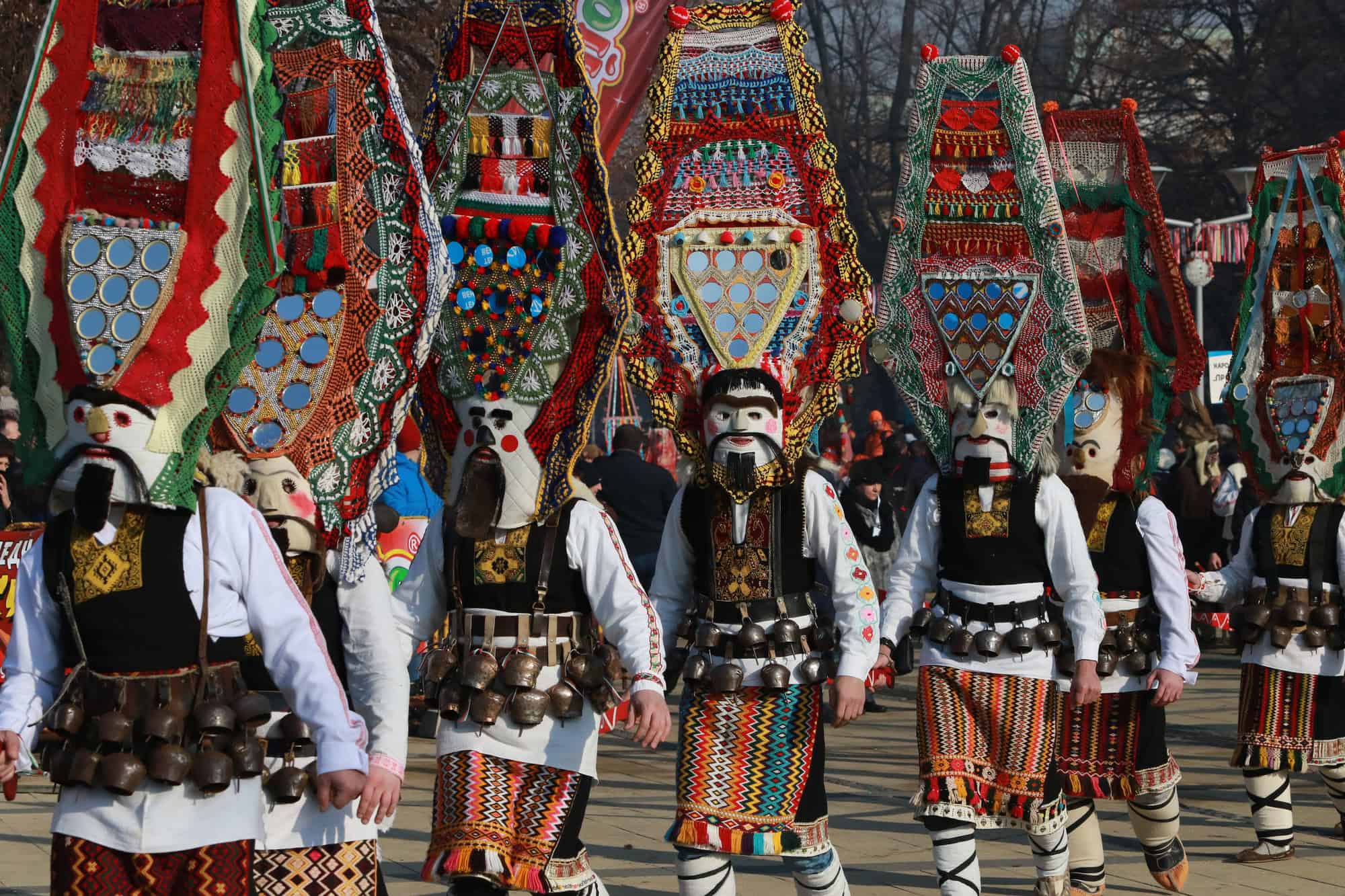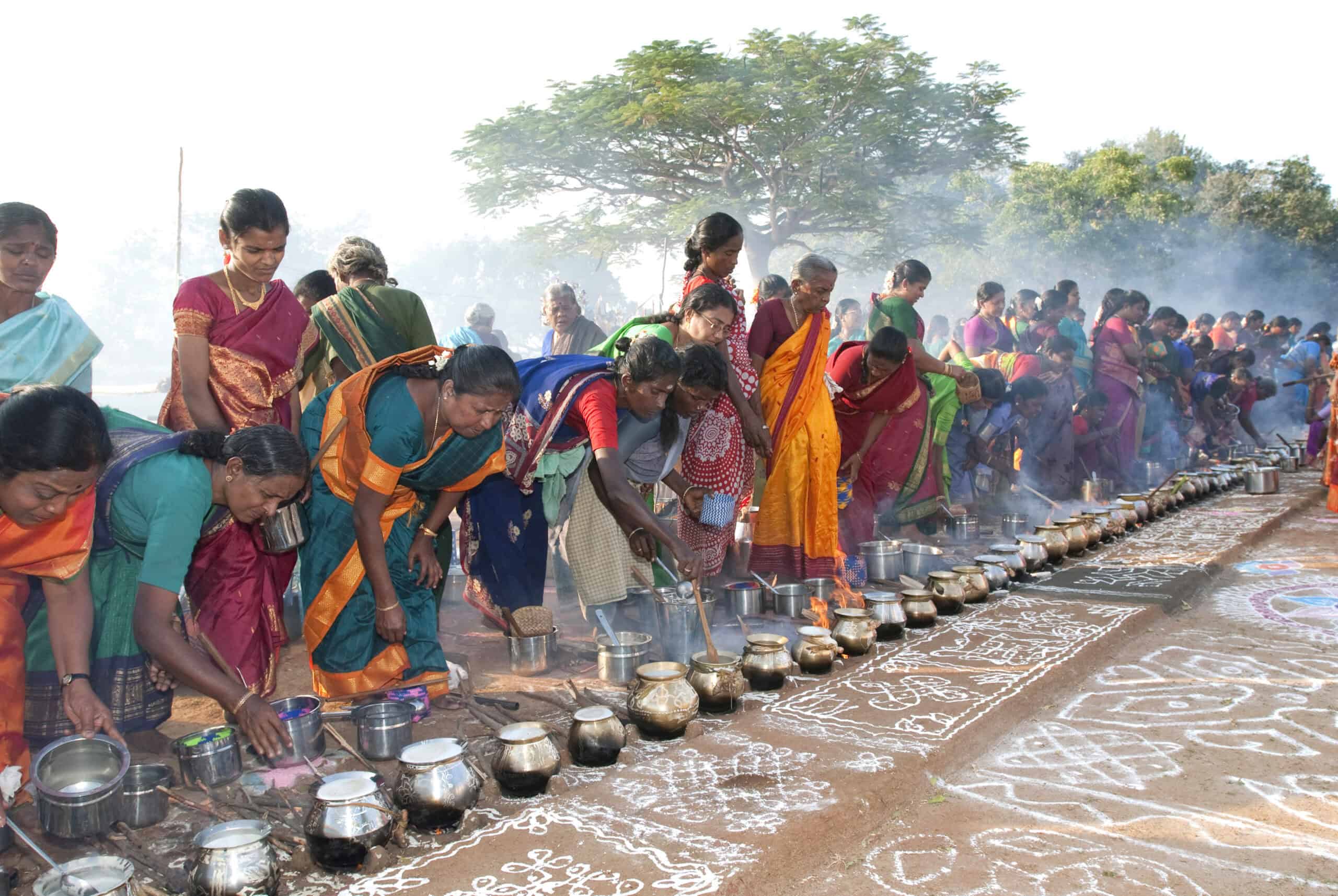Every December, after the turkey platter has returned to its rightful place in the cupboard until next year, my mother unveils the holiday linens. Once that hand-me-down 1960s tablecloth — with its classic motifs of holly berries, poinsettias and mistletoe — hits the dining room table and Johnny Mathis croons “Winter Wonderland” on the turntable, Christmas is officially on. Over the years, when guests have joined us, conversation has often centered around the question, “What are your family holiday traditions?” Americans might easily reduce the holidays to that familiar stretch between Thanksgiving and New Year’s, but global travel is expanding our worldview and adding an international perspective to the topic. This year, we’re zooming out and considering a broader swath of latitude, longitude and winter calendar as we spotlight five unique holiday traditions across four continents, two hemispheres and nine time zones.

Photography by Paul Liebhardt
Guatemala
In Central America, the lights of Christmas take on epic scale and dimension. La Quema del Diablo (the Burning of the Devil) marks the start of the holidays with parades, piñatas, fireworks and bonfires that culminate with burning an effigy of Satan. The all-important Fiesta de la Inmaculada Concepción (Feast of the Immaculate Conception) to honor the Virgin Mary takes place on December 8, but December 7 is also a date of religious fervor. Catholic faith turns visceral as communities banish negativity with hundreds of thousands of bonfires blazing throughout the country.
“It’s a beautiful tradition dear to my heart,” says Maria Veronica Del Rosario Rondeau Lopez, an artist/designer and James Beard Award semifinalist restaurateur based in Boston. Her home in the UNESCO World Heritage City of Antigua sits near the ruins of Convento de la Concepción, a 16th-century convent that was destroyed by an earthquake in 1773. Locals assemble there to perform La Quema del Diablo. “We are devout followers and believers,” she notes. “People bring things they want to dispose of — everything that had bad energy during the year — and make a huge bonfire. It cleanses the air and space so that Día de la Concepción is pure and clean.”
Italy
Italian culture isn’t a monolith; each of its 20 regions has its own holiday rituals, as does the diaspora. The Feast of the Seven Fishes is a beloved Christmas Eve tradition among Italian Americans. Whether rooted in the Roman Catholic practice of abstaining from meat before certain days or from an impoverished Southern Italian lifestyle that has coastline but no carne, it’s a meaningful spinoff with no exact analog in the old country. “It’s the taste of nostalgia,” says Nicholas Stefanelli, a Michelin-starred chef of Puglian descent at Masseria in Washington, D.C. “Growing up in the eighties, I loved that journey to the city market to source octopus, oysters and rockfish from the wharf as well as smelts because we couldn’t get anchovies.”
One custom worth adopting is making polenta alla spianatora, a cozy tradition of winter Sundays in Northern Italy. The creamy cornmeal dish is spread across a wooden board and topped with tomato sauce, pork and pecorino cheese as family-style comfort food. “Everyone’s in the kitchen wanting to chop garlic or stick fingers into something,” Stefanelli jokes. “The ceremonial beauty of bringing everybody to the table — no matter how elegant or simple — allows the problems of the world to disappear for at least a few hours.”

Photography provided by Magical Europe
Bulgaria
Officially recognized by UNESCO as part of the Intangible Cultural Heritage of Humanity, the traditions of kukeri and the Surva Festival are celebrated January 13-14, which meant New Year’s Eve and Day back when the world followed Julius Caesar’s calendar. In southeastern Europe, this blend of pagan and Orthodox customs predating Christianity marked new beginnings. Historically, only young men participated in the ritual as a public transition from teenagers to bachelors ready for marriage.
These days, it’s an awakening of spirits and a harbinger of health and prosperity for all. Dressed as kukeri, villagers perform dances in homespun masquerade costumes, often fashioned with animal skins and bells. In the dead of winter, families gather around stoves to make merry, warm themselves with rakia (fruit brandy) and construct elaborate feather masks. The western city of Pernik hosts Surva Festival, the country’s largest such event. There, costumed folk dancers roam from house to house to scare off bad spirits and receive treats. “Because of the mask, you can make happen the craziest things you imagine,” says Светослав “Slavi” Милев Milev, son of a Bulgarian anthropologist. “You can perform the other sides of yourself. Imagine, all day long dancing with a hundred kilograms of bells. We drink a lot of rakia just to survive. It’s some kind of magic.”
Liberia
In West Africa along the Atlantic Coast, Liberia marks Christmas Eve with a full day of feasts. “We don’t have presents,” says chef Theresa Headen of Elegant Cuizines in Richmond, Virginia. “Jesus shared salvation; we share fufu with our hands.” In the United States, African cassava is often substituted with plantains, but in Liberia, “we boil cassava and use a giant mortar and pestle to beat it into a dough,” she notes, explaining that one person turns it while another beats it. “It’s a rhythm. You have to know who to beat with or else it gets stuck. It’s not work; it’s time to mold together.”
Christmas Eve is about pulling out the special bowl and visiting neighbors, rain or shine. “You can’t play with that bowl,” she adds. “We lived with cousins and aunts, five different families in the same house. If you touched it or washed it wrong, you were in trouble.” But folks can’t feast too much at their first stop, because they’re expected to visit four or five families and share fufu with each. “Many hands, one bowl,” Headen notes. “You don’t turn down a meal of fufu with palm butter or okra sauce.” Locals wash it down with palm wine — fermented cassava juice mixed with raw sugarcane and left for a year to yield a potent spirit.

Photography by Dinodia Photo
India
India is known for its state-specific traditions, but harvest is commemorated nationally. In the south, the four-day Pongal celebration, January 13-16, is an acknowledgement of abundance and gratitude, with offerings to the sun and cattle. It’s named after sweet pongal, a porridge-like dish made with rice, milk, jaggery (unrefined sugar) and nuts. In the north, on January 14, Lohri is a single day of sharing glad spirits and tidings with neighbors.
“When I arrived in the United States, I thought, if I combine Halloween and Thanksgiving, that’s basically Lohri,” says Sandeep “Sunny” Baweja, James Beard Foundation Award–nominated, Punjab-born chef of Lehja Restaurant in Short Pump, Virginia. “As kids, we went in groups to people’s houses to sing folk songs.” It’s the season of wheat, sugarcane and mustard, but instead of candy bars, neighbors hand out whole grains and jaggery or money according to that year’s good fortune and bounty. “A day in advance, we would make a list,” adds Baweja, noting that those with big news light the biggest bonfires. “If a house has good news that year — a baby boy was born or a son opened a business — we’re expecting five dollars! Otherwise, it’s five cents. Then we eat lots of peanuts, dance and sing songs.”


